Stanford University – The Denning House
Ennead Architects turned a parking lot into a prestigious hideaway on Stanford University’s campus to complete the Denning House in Palo Alto, California.
Denning House is a gathering place at the center of campus, a hub for the scholars of the Knight Hennessy program. At the same time it is a place apart, a quiet refuge from the hubbub of the surrounding university. Intended to provide a center for the scholars, drawn from 7 different graduate programs at Stanford, the new building offers a variety of meeting, classroom and dining spaces, formal and informal, large and small, both inside and outside, suitable for individual study, small gatherings or large events.
The site, at the edge of Lake Lagunita, is an unusual one: formerly a parking lot, it is surrounded by a dense forested landscape of California oaks, more like the original landscape here than the current manicured Stanford campus. Many of these trees are on the back side of the lake’s berm, a fifteen foot high slope which must be traversed in order to gain a view of the lake. Once at the top, however, one is rewarded with a panoramic view of the lake, and the rolling hills in the distance to the southwest.
The buildings design takes advantage of this site condition by inverting the program, placing the large public spaces including dining, classroom and lounges, on the second floor, where they take full advantage of the spectacular view. These surmount the administration, conference, and back-of-house facilities on the ground floor.
One approaches the building via a gently curving, sloping boardwalk, which gradually leaves the ground and delivers one to a “front porch’ and lobby space. From here, the sequence is further attenuated with a gracious shallow stair, which one slowly ascends, gradually revealing the expansive view, until now totally hidden. A gently sloping ceiling rises up to the left and right of the stair and up towards the lake, creating a continuous flowing space that moves from intimate to grand. The major spaces here are arrayed along a shallow arcing façade, giving onto a continuous deck along the lake.
Through these devices, and the use of Douglas fir wood structure and surfaces throughout the interior and cypress cladding on the exterior, the building feels like a treehouse, far removed from the campus around it, hidden in the trees but looking out at the iconic California landscape beyond, for which Stanford is famous. In this way it is a different kind of building for Stanford, but very much of its place.
Architect: Ennead Architects
Photography: Tim Griffith

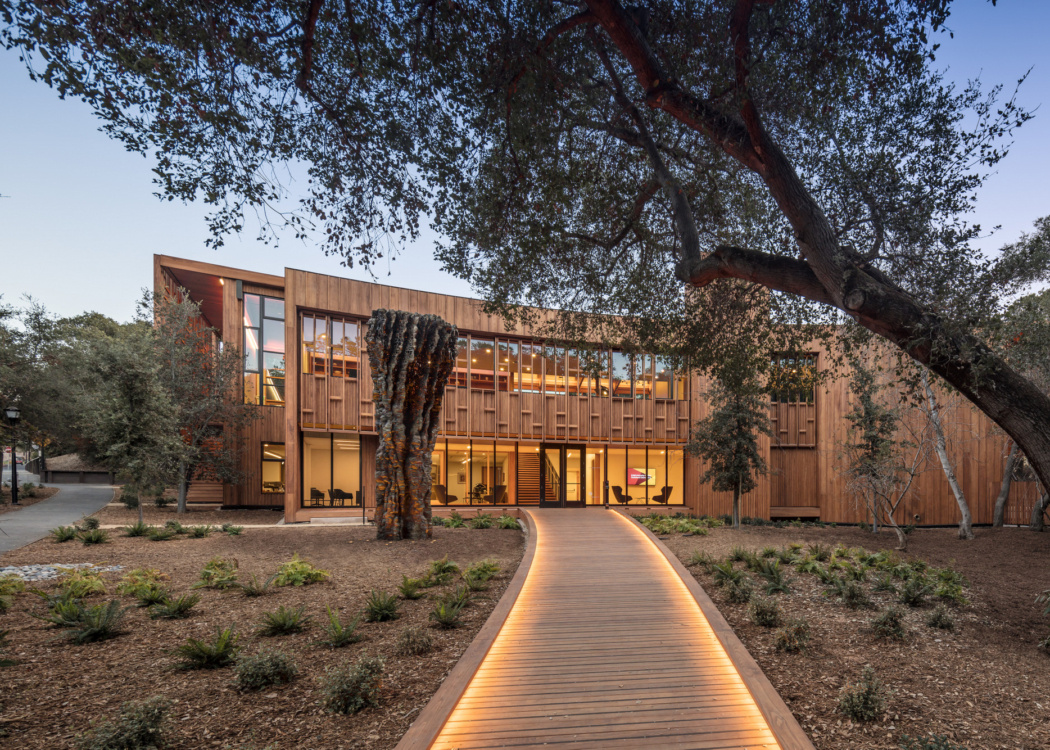
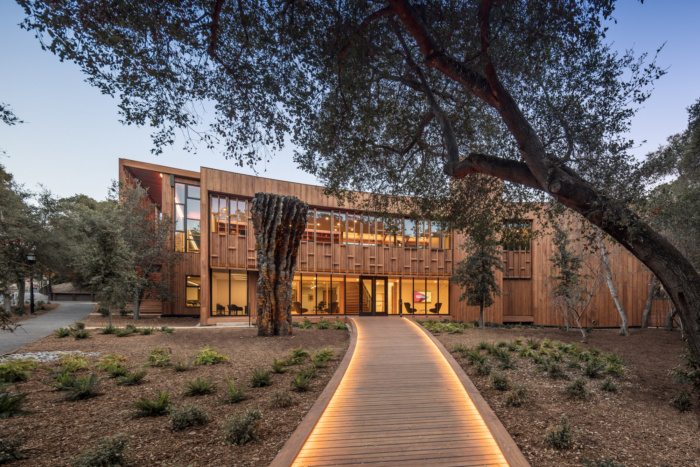

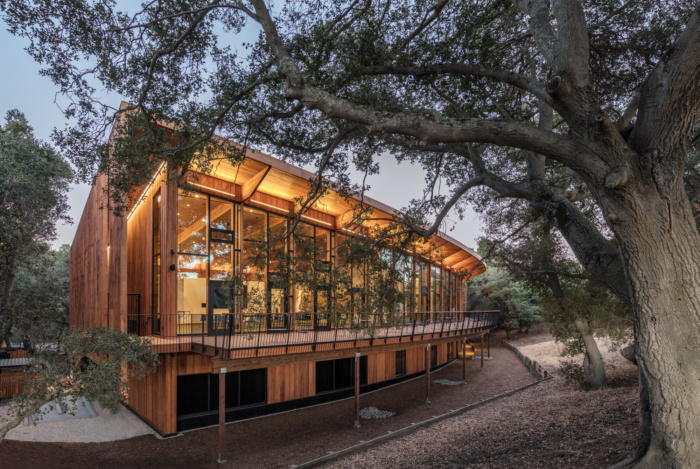

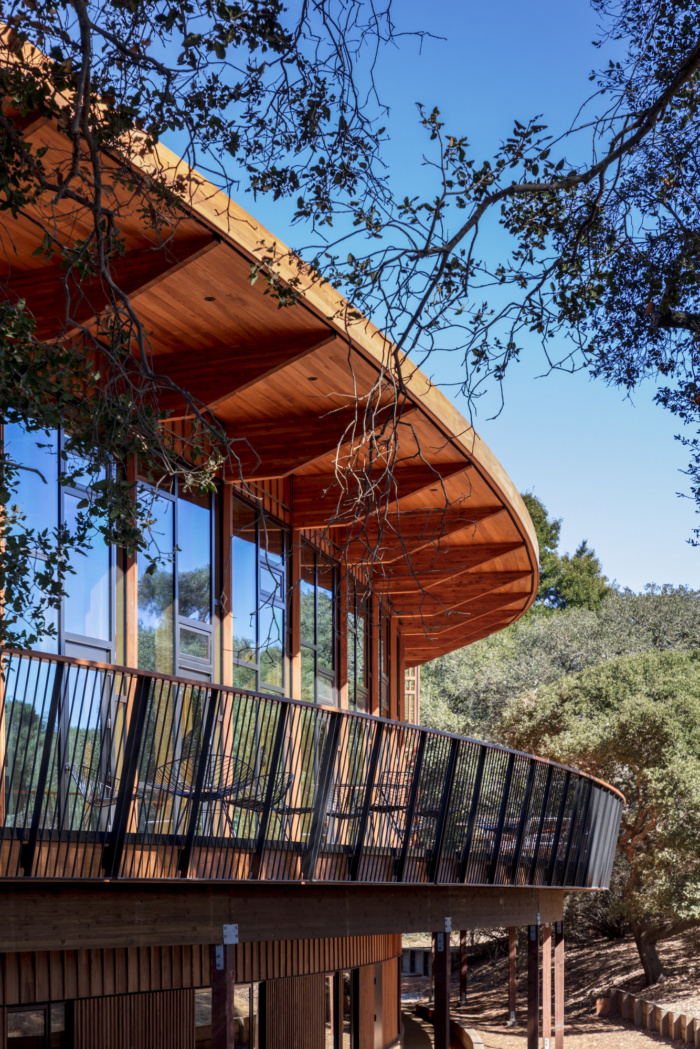
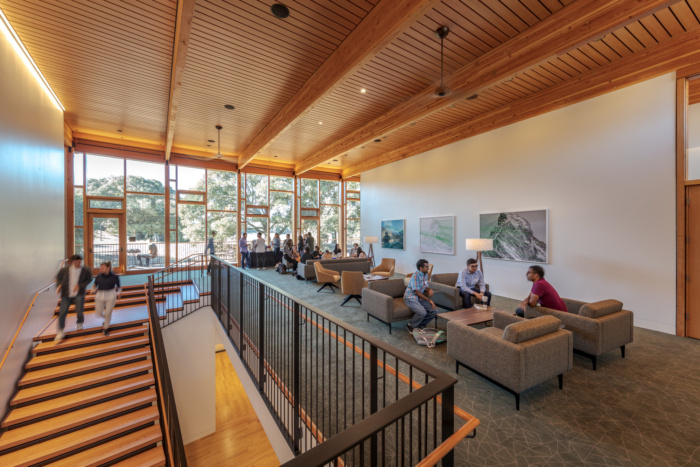


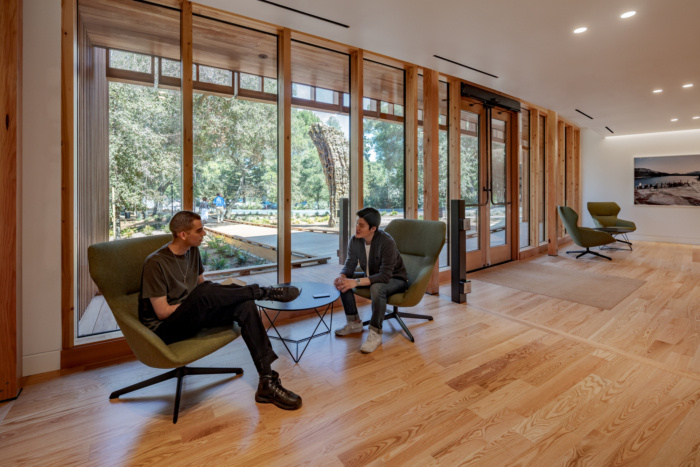


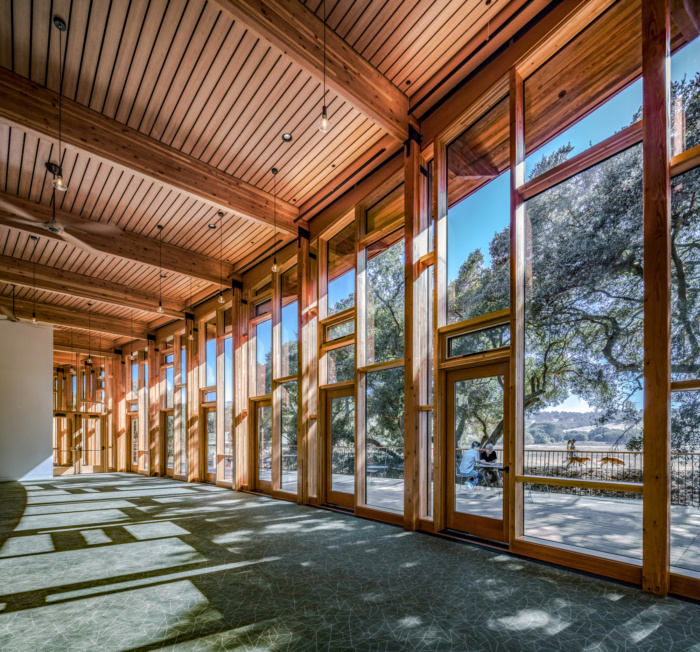
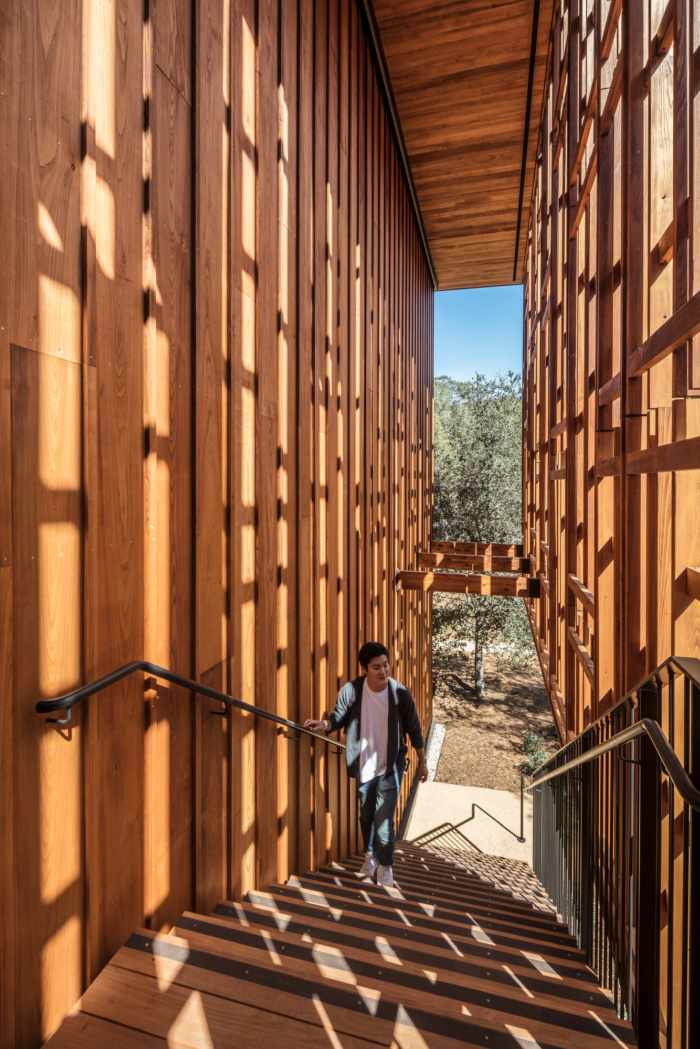
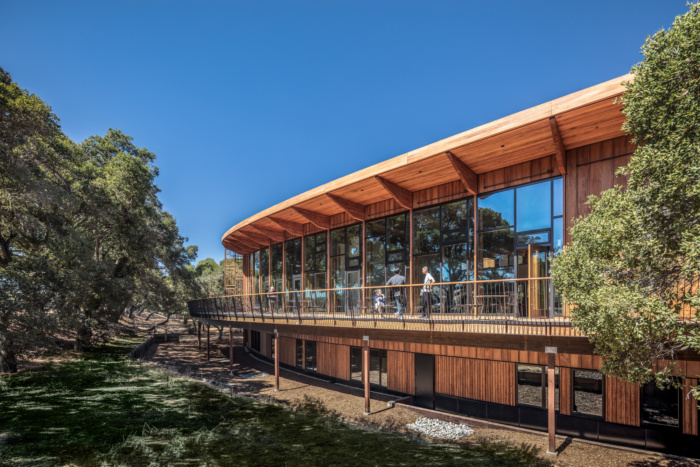
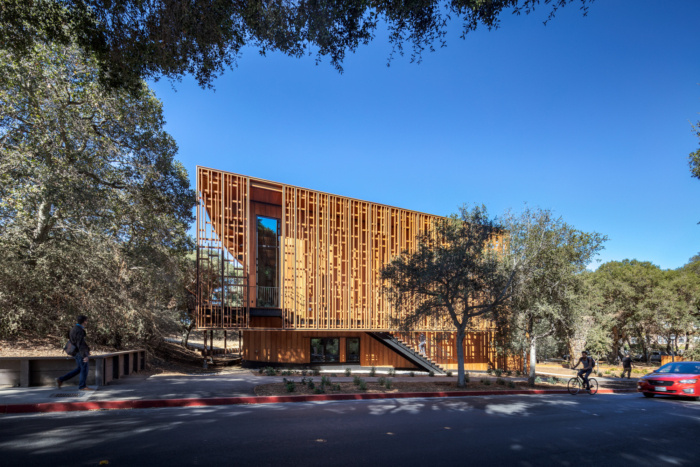




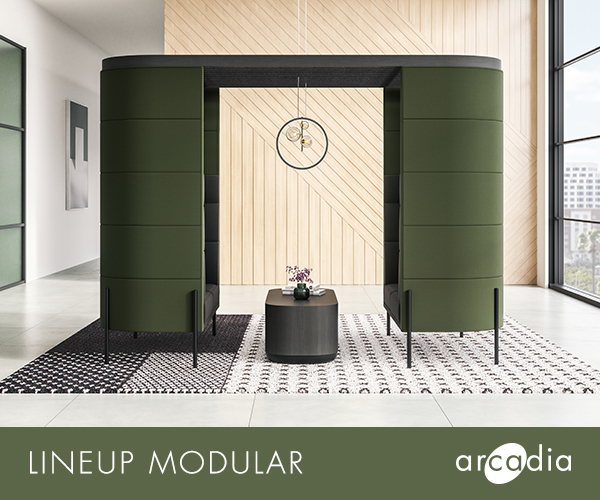





Now editing content for LinkedIn.